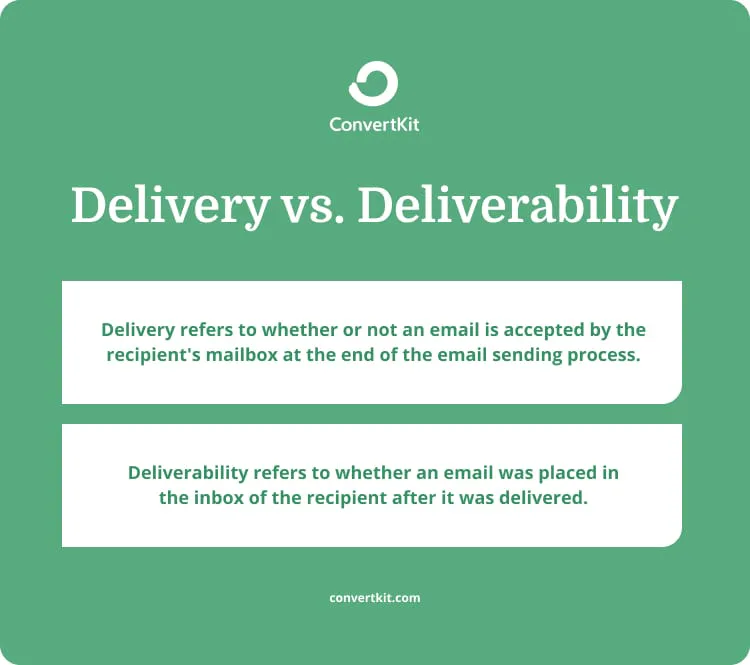In episode 17 of the Deliverability Defined podcast, Melissa and I define the deliverability terminology that anyone who sends emails should be familiar with in order to reach the inbox of their subscribers.

Deliverability terminology
Delivery
When an email is successfully accepted by the receiver’s mailbox at the end of the email sending process.
Deliverability
A sender’s ability to reach the inbox of their subscribers.
Spam filter
The algorithms and machine learning used to decide whether emails belong in the inbox, spam folder, or somewhere else.
Mailbox provider
The platform that a subscriber uses to host their mailbox. Some examples of mailbox providers are Gmail, Hotmail, and Yahoo.
Complaint
When a subscriber marks a message as spam.
Feedback loop
The mechanism in which mailbox providers send complaint information back to the sender.
Domain
The part of an email address that comes after the @ symbol.
Spam trap
An email address that is used to catch senders with bad practices.
Blocklist
A company or organization that compiles a database of risky domains or IPs.
Authentication
Methods to help ensure that the person sending the email is who they say they are. The 3 types are SPF, DKIM, and DMARC.
Message headers
The “transcript” of the email that contains details about the transmission of the email such as who sent it, who received it, and whether or not the message passed authentication.
MX record
A DNS record that specifies the mail server responsible for accepting email messages on behalf of a domain.
Open rate
Opens are tracked using an invisible pixel embedded in the email. If the pixel is “loaded”, an open is logged. Open rate is typically calculated by # opens / # deliveries.
Click rate
A click is tracked when someone clicks a link in an email. Click rates are typically calculated as # clicks / # Deliveries. Unique click rate is # subscribers who clicked a link / # deliveries.
Listbombing
When subscribers are added to your form by a bot, and they didn’t actually sign up to receive your emails.
Double opt-in/Confirmed opt-in
When you require that anyone who signs up to your form has to click a link in an email to confirm that they actually signed up.
Opt-in confirmation email
An email that contains a link for subscribers to confirm that they want to stay on your list. Those who don’t click to confirm should be removed from the list.
Call to action (CTA)
The action step in your email that you want your subscribers to take.
Seedlist
A list of test email addresses that report whether emails landed in their inbox or spam folder.
Spoofing
When someone sends an email pretending to be another person, company, brand, etc.
Allowlist/Safelist/Address book
A way for subscribers to mark a sender as “safe” and ensure all of their messages go to the inbox.
Links
- Deliverability Defined 02: Sender Reputation: The Road to Inbox Placement
- Deliverability Defined 05: Avoiding Spam Traps the Right Way
- Deliverability Defined 06: Authentication (SPF, DKIM, DMARC)
- Deliverability Defined 07: Meaningful Metrics: Going Beyond Open Rates
- Deliverability Defined 09: Demystifying Blocklists
- How to ensure your emails are authenticated
Try Kit’s deliverability in action
It’s now free to use Kit with an audience of 10,000 subscribers or less! Start building your audience and reaching their inboxes: kit.com/pricing.
Stay in touch
To receive email notifications when new episodes of Deliverability Defined are available, or to submit topic suggestions, sign up to our email list.





